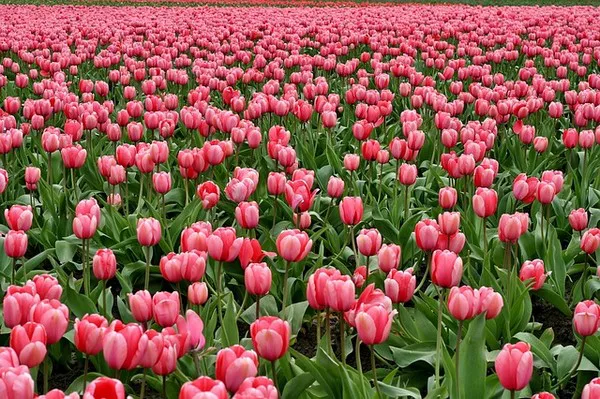The allure of a vibrant and flourishing garden is a universal desire among gardening enthusiasts. One of the key factors contributing to the success of a garden lies in understanding the mechanisms that drive plant growth, particularly in the case of flowers. While nature has its own pace, there are ways to enhance and expedite the growth of flowers. In this article, we delve into the science and art of cultivating flowers and explore strategies to make them bloom faster.
Understanding the Basics: The Science Behind Flower Growth
Before diving into strategies to accelerate flower growth, it is essential to grasp the fundamental principles that govern plant development. Photosynthesis, the process by which plants convert sunlight into energy, is at the core of plant growth. Additionally, nutrient absorption, water uptake, and hormonal balance play crucial roles in determining the rate of flower development.
Optimal Growing Conditions: Providing the Perfect Environment
Creating an ideal environment for your flowers is the first step towards promoting faster growth. Adequate sunlight is paramount, as it fuels the photosynthetic process. Ensure that your flowers receive at least 6-8 hours of sunlight daily. Additionally, consider the specific light requirements of each flower species, as some may thrive in direct sunlight while others prefer partial shade.
Soil quality is another critical factor. Invest in nutrient-rich soil with good drainage to prevent waterlogging, which can stunt growth and lead to root diseases. Regularly test and amend the soil to maintain optimal pH levels, as different flowers thrive in varying pH ranges.
Proper watering is equally vital. Provide a consistent and appropriate amount of water, avoiding both drought and overwatering. Mulching can help retain soil moisture and regulate temperature, creating a conducive environment for flower growth.
Nutrient Boost: Feeding Your Flowers for Success
Like any living organism, flowers require a balanced diet to flourish. Fertilizing your garden is a key strategy to provide essential nutrients that may be lacking in the soil. Choose a fertilizer with the appropriate balance of nitrogen, phosphorus, and potassium (N-P-K) based on the specific needs of your flowers.
Organic fertilizers, derived from natural sources, are often favored for their sustainable and long-term benefits. Compost, rich in organic matter, not only supplies nutrients but also enhances soil structure, promoting a healthier root system.
In addition to regular fertilization, consider foliar feeding, a method where nutrients are sprayed directly onto the leaves. This allows for quicker absorption and can be especially effective when flowers show signs of nutrient deficiencies.
Strategic Pruning: Shaping Growth for Maximum Impact
Pruning is a valuable technique that involves the selective removal of certain parts of a plant to encourage desired growth. By removing dead or overgrown branches, you redirect the plant’s energy towards new growth and flower production. Regular pruning also improves air circulation, reducing the risk of diseases that could impede growth.
Timing is crucial when it comes to pruning. Perform it during the dormant season or just before the growing season begins. Be mindful of the specific pruning requirements of each flower species, as some may bloom on new growth, while others on old wood.
Temperature and Seasonal Considerations: Aligning with Nature’s Rhythm
Understanding the natural growth cycles of flowers and aligning your gardening practices with seasonal changes can significantly impact their development. Different flowers have specific temperature preferences, and providing the right conditions can expedite the blooming process.
In colder climates, consider starting seeds indoors or using protective coverings to extend the growing season. Conversely, in warmer regions, choose flower varieties that thrive in higher temperatures. Timing your planting to coincide with the optimal growing season for each species ensures that they receive the right cues to initiate flowering.
Hormonal Manipulation: Coaxing Flowers to Bloom
Plant hormones play a pivotal role in regulating growth and development. By understanding these hormones, gardeners can employ strategies to manipulate flower production. Gibberellins, for example, promote stem elongation and flowering. Applying gibberellic acid, a synthetic form of gibberellins, can stimulate flower development, particularly in plants that respond positively to these hormones.
Similarly, ethylene is a plant hormone associated with the ripening of fruits and the aging of flowers. By managing ethylene levels through proper ventilation and avoiding ethylene-producing sources, such as certain fruits, you can extend the longevity of flowers and encourage continuous blooming.
Advanced Techniques: Greenhouse Cultivation and Hydroponics
For those seeking to take their flower cultivation to the next level, advanced techniques such as greenhouse cultivation and hydroponics offer unique advantages. Greenhouses provide controlled environments with regulated temperature, humidity, and light, allowing for year-round flower production. Hydroponic systems, which involve growing plants without soil, offer precise control over nutrient delivery, promoting faster and more efficient growth.
While these methods require additional investment and expertise, they can yield impressive results for those looking to maximize flower production and quality.
Conclusion
Accelerating flower growth is a nuanced and multifaceted process that combines scientific principles with hands-on gardening practices. By creating optimal growing conditions, providing essential nutrients, employing strategic pruning, aligning with seasonal changes, manipulating hormones, and exploring advanced techniques, gardeners can unlock the secrets to faster and more abundant blooms. As with any gardening endeavor, patience and attentive care remain essential, but with the right knowledge and techniques, the rewards of a vibrant and flourishing garden are well within reach.


